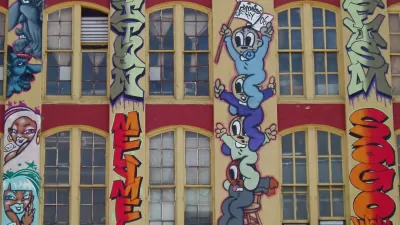A new interactive map produced by researchers at Columbia University reveals the energy use of nearly every building in New York City. Besides being an interesting curiosity, the map is a crucial first step in improving energy efficiency.
New Yorkers love to compare themselves to their neighbors across the city (who has the best nightlife? who has the best pizza parlor? who has the best park? who has the most hipsters?). Now they can compare who uses the most (or least) energy.
In a city in which over two-thirds of its total energy use come from buildings, knowing how much specific buildings, or areas of the city, are consuming energy in comparison with other areas may prove crucial in helping to curb energy usage.
"The lack of information about building energy use is staggering," said Bianca Howard, lead author and Columbia Engineering PhD student, in a statement. "We want to start the conversation for the average New Yorker about energy efficiency and conservation by placing their energy consumption in the context of other New Yorkers. Just knowing about your own consumption can change your entire perspective."
Furthermore, according to author Ariel Schwartz, "Knowing which areas of the city consume more energy could also inform future decisions about local energy generation. Maybe a landlord with some glaringly inefficient buildings will want to install some solar panels, or perhaps building tenants will band together to work on other energy-efficient options (i.e., capturing and reusing building waste heat)."
FULL STORY: A Block-By-Block Look At The Energy Consumption Of New York’s Buildings

Study: Maui’s Plan to Convert Vacation Rentals to Long-Term Housing Could Cause Nearly $1 Billion Economic Loss
The plan would reduce visitor accommodation by 25,% resulting in 1,900 jobs lost.

North Texas Transit Leaders Tout Benefits of TOD for Growing Region
At a summit focused on transit-oriented development, policymakers discussed how North Texas’ expanded light rail system can serve as a tool for economic growth.

Why Should We Subsidize Public Transportation?
Many public transit agencies face financial stress due to rising costs, declining fare revenue, and declining subsidies. Transit advocates must provide a strong business case for increasing public transit funding.

How Community Science Connects People, Parks, and Biodiversity
Community science engages people of all backgrounds in documenting local biodiversity, strengthening connections to nature, and contributing to global efforts like the City Nature Challenge to build a more inclusive and resilient future.

Alabama: Trump Terminates Settlements for Black Communities Harmed By Raw Sewage
Trump deemed the landmark civil rights agreement “illegal DEI and environmental justice policy.”

Dear Tesla Driver: “It’s not You, It’s Him.”
Amidst a booming bumper sticker industry, one writer offers solace to those asking, “Does this car make me look fascist?”
Urban Design for Planners 1: Software Tools
This six-course series explores essential urban design concepts using open source software and equips planners with the tools they need to participate fully in the urban design process.
Planning for Universal Design
Learn the tools for implementing Universal Design in planning regulations.
City of Santa Clarita
Ascent Environmental
Institute for Housing and Urban Development Studies (IHS)
City of Grandview
Harvard GSD Executive Education
Toledo-Lucas County Plan Commissions
Salt Lake City
NYU Wagner Graduate School of Public Service



























